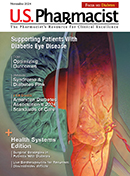In the 1930s, one of the strategies used by the Home Owners Loan Corporation (HOLC) was to "redline" maps of major metropolitan housing markets to assess lending risk. This process resulted in the assignment of one of four grades to a neighborhood. Criteria for this assessment was the presence of "foreign-born" and "negro" residents. Neighborhoods were assigned a grade of "best," "still desirable," "definitely declining," or "hazardous."
Worse grades were historically assigned to residents from minoritized racial and ethnic groups, those from poorer housing quality—which was reflected in the average housing price—and those from older housing. This grading system resulted in economic disparities that are only now being identified as having adverse intergenerational socioeconomic and health-related consequences. Such consequences may include an increased risk for the development of breast cancer (BC) as well as poorer outcome from the disease.
Using historical georeferenced HOLC grading data from March 1937 to April 1940, researchers investigated the associations between measures of mortgage lending discrimination by race, ethnic, and BC outcomes in four New Jersey counties (Bergen, Essex, Hudson, and Union) and two New Jersey municipalities (Atlantic City and Trenton). The data from the New Jersey State Cancer Registry for all female residents aged 20 years and older diagnosed between 2008 and 2017 with primary histologically confirmed invasive BC were matched with HOLC data. An HOLC grade was attributed to each patient with BC (n = 15,025) whose geocoded residential address at the time of diagnosis fell within the historical HOLC area.
Analyses of the data showed that within each New Jersey metropolitan area for which historical HOLC redlining grades were available, worse HOC grades were focused on urban cores, including Trenton, Camden, Atlantic City, Newark, Elizabeth, Jersey City, Hoboken, and Union City.
Of the 14,964 women diagnosed with BC, 51.4% were White, 23.4% were Black, 18.0% were Latina, and 7.2% were "other." Over one-quarter (26.1%) of Blacks and Latinas (27.7%) resided in "hazardous" HOLC grades compared with only 12.5% of Whites. About 70% (69.4%) of patients diagnosed with late-stage BC compared with 64.2% of patients with early-stage disease lived in HOLC grades deemed "definitely declining" or "hazardous." Of those with high tumor grades, 67.9% lived in these two highest risk HOLC grades compared with 62.0% of cases with low-grade tumors. A similar trend was seen for triple-negative BC (TNBC), with 68.7% with TNBC versus 63.3% without TNBC living in these two worse HOLC grades.
From 2008 to 2017, there were 1,755 BC–specific deaths for an estimated 5-year BC–specific survival of 88%. The median follow-up time was 5.3 years. When race and ethnicity-dependent associations were made, those graded as living in the "best" HOLC grades had 66% lower odds of being diagnosed with late-stage BC, 28% lower odds of having a high tumor grade, 33% lower odds of having TNBC, and 52% lower odds of BC–specific death compared with those who lived in "hazardous" HOLC grades; however, this association only applied to White women.
Among women from the "Other" (i.e., Asian, Pacific Islander, Native American, Alaska Native, Hawaiian, or "not otherwise specified") race and ethnicity category, residence in "still desirable" HOLC grade areas was associated with lower odds of being diagnosed with late-stage BC compared with those who resided in "hazardous" HOLC grade areas. Women who were aged at least 40 years fared better with lower odds of late-stage, high-grade disease and lower risk of TNBC and BC–specific death compared with those who were aged younger than age 40 years. The odds for being diagnosed with high-grade and TNBC were higher in the early years of the study, i.e., 2008-2011, compared with later study years.
The authors concluded that current-day residence in historically identified areas that indicated mortgage-lending discrimination by race and ethnicity (i.e., those areas that were subject to redlining) were associated with poorer recent BC outcomes, which included higher odds of having late-stage at diagnosis, high-tumor grades, the TNBC subtype, and higher odds for BC-specific death compared with nonredlined areas. These findings varied by race and ethnicity.
As growing focus is being placed on diversity, equity, and inclusion, pharmacists must become more aware of the effects that structural racism has on disease burden and outcome.
The content contained in this article is for informational purposes only. The content is not intended to be a substitute for professional advice. Reliance on any information provided in this article is solely at your own risk.
« Click here to return to Breast Cancer Update.






